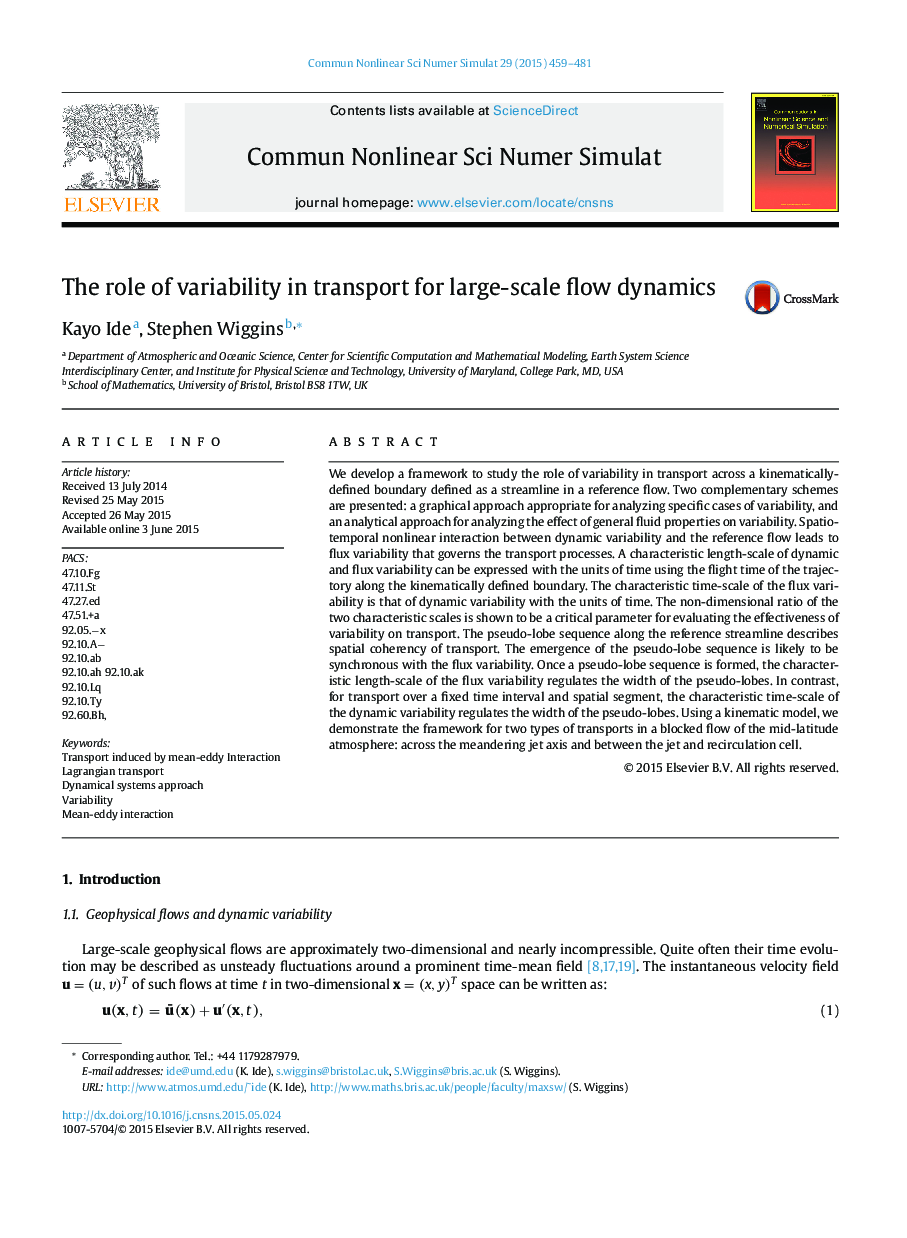| Article ID | Journal | Published Year | Pages | File Type |
|---|---|---|---|---|
| 7155401 | Communications in Nonlinear Science and Numerical Simulation | 2015 | 23 Pages |
Abstract
We develop a framework to study the role of variability in transport across a kinematically-defined boundary defined as a streamline in a reference flow. Two complementary schemes are presented: a graphical approach appropriate for analyzing specific cases of variability, and an analytical approach for analyzing the effect of general fluid properties on variability. Spatio-temporal nonlinear interaction between dynamic variability and the reference flow leads to flux variability that governs the transport processes. A characteristic length-scale of dynamic and flux variability can be expressed with the units of time using the flight time of the trajectory along the kinematically defined boundary. The characteristic time-scale of the flux variability is that of dynamic variability with the units of time. The non-dimensional ratio of the two characteristic scales is shown to be a critical parameter for evaluating the effectiveness of variability on transport. The pseudo-lobe sequence along the reference streamline describes spatial coherency of transport. The emergence of the pseudo-lobe sequence is likely to be synchronous with the flux variability. Once a pseudo-lobe sequence is formed, the characteristic length-scale of the flux variability regulates the width of the pseudo-lobes. In contrast, for transport over a fixed time interval and spatial segment, the characteristic time-scale of the dynamic variability regulates the width of the pseudo-lobes. Using a kinematic model, we demonstrate the framework for two types of transports in a blocked flow of the mid-latitude atmosphere: across the meandering jet axis and between the jet and recirculation cell.
Related Topics
Physical Sciences and Engineering
Engineering
Mechanical Engineering
Authors
Kayo Ide, Stephen Wiggins,
